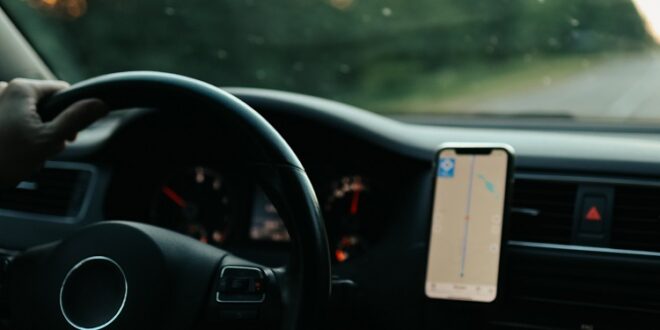The driving theory test is a pivotal step in the journey toward becoming a licensed driver in the United Kingdom. Among its two main components, the hazard perception test stands out as a crucial evaluation of your ability to anticipate and respond to potential dangers on the road. Mastering hazard perception is essential for road safety and test success. Mock driving theory tests, specifically tailored to the hazard perception component, play a vital role in enhancing your hazard perception skills. In this comprehensive guide, we will explore the significance of hazard perception and how mock tests can effectively improve this critical skill.
Section 1: Understanding Hazard Perception
Before delving into the role of mock tests, let’s establish a clear understanding of hazard perception and its importance in safe driving and the theory test.
1.1 What Is Hazard Perception?
Hazard perception refers to your ability to recognize potential dangers or hazards on the road while driving. It involves identifying situations that may require you to take immediate action, such as braking or changing lanes, to avoid an accident. Hazard perception is an essential component of safe and defensive driving.
1.2 The Role of Hazard Perception in the Theory Test
In the UK driving theory test, the hazard perception test assesses your ability to spot potential hazards in a series of video clips. You are required to click a mouse button when you perceive a developing hazard. The sooner you click, the higher your score, reflecting your ability to anticipate dangers.
Section 2: The Benefits of Mock Hazard Perception Tests
Now that we understand the significance of hazard perception, let’s explore the benefits of using mock hazard perception tests to enhance your skills.
2.1 Realistic Simulation
Mock hazard perception tests provide a realistic simulation of the official hazard perception test. These practice tests replicate the format, timing, and scoring system of the real test, allowing you to become familiar with its structure and demands.
2.2 Repetitive Practice
Hazard perception is a skill that improves with practice. Mock tests offer the opportunity for repetitive practice, enabling you to sharpen your hazard perception skills through consistent and varied scenarios.
2.3 Self-Assessment
Mock hazard perception tests allow you to assess your performance. After completing a practice test, you can review your clicks and identify any areas where your hazard perception may need improvement.
2.4 Confidence Building
As your scores in mock hazard perception tests improve, your confidence in your ability to identify and respond to hazards grows. This enhanced confidence is essential for test success and safe driving.
Section 3: How to Effectively Use Mock Hazard Perception Tests
Now that we understand the benefits, let’s delve into strategies for effectively using mock hazard perception tests to improve your skills.
3.1 Early and Consistent Practice
Start practicing with mock hazard perception tests early in your theory test preparation. Consistency is key to mastering this skill. Allocate time for regular practice sessions to hone your ability.
3.2 Select Quality Mock Test Resources
Choose reputable and accurate sources for your mock hazard perception tests. Official resources provided by the Driver and Vehicle Standards Agency (DVSA) and trusted online platforms are reliable options.
3.3 Simulate Test Conditions
When taking mock hazard perception tests, recreate test conditions as closely as possible. Use a computer mouse or touchpad to click when you spot a hazard, and pay attention to the timing and scoring system.
3.4 Review and Analyze
After completing a mock hazard perception test, review your performance. Pay attention to the scenarios where you missed clicking on a developing hazard. This analysis will help you identify areas for improvement.
3.5 Focus on Timing
Hazard perception tests require quick responses. Practice clicking at the appropriate time to maximize your scores. Consider using the practice test’s review feature to understand when you should have clicked.
3.6 Vary Scenarios
Use mock tests with a variety of scenarios, as real hazards can occur in different forms. Diverse scenarios help you develop a well-rounded hazard perception skill set.
Section 4: Additional Tips for Success
In addition to using mock hazard perception tests effectively, consider these tips to further enhance your hazard perception skills and increase your chances of success in the theory test.
4.1 Stay Informed
Stay updated on changes to the theory test and any new road rules or signs. The theory test evolves, and being aware of these changes is essential for accurate hazard perception.
4.2 Real-World Application
Apply your hazard perception skills while driving in real-world situations. Practice defensive driving and actively identify and respond to hazards on the road.
4.3 Expert Feedback
Seek feedback from experienced drivers, instructors, or friends who can offer insights into your hazard perception skills. They can provide valuable advice for improvement.
Conclusion
Mastering hazard perception is not only crucial for passing your driving theory test but also for ensuring your safety and the safety of others on the road. Mock hazard perception tests are effective tools for enhancing this skill, providing realistic simulations, self-assessment opportunities, and the practice necessary for improvement. By consistently practicing with mock tests and applying the strategies and tips provided in this guide, you can significantly enhance your hazard perception skills and increase your chances of success in both the theory test and your future driving endeavors. Safe driving begins with your ability to perceive and respond to hazards effectively.
 HammBurg Be informed with latest news, reviews, entertainment, lifestyle tips, and much more.
HammBurg Be informed with latest news, reviews, entertainment, lifestyle tips, and much more.




